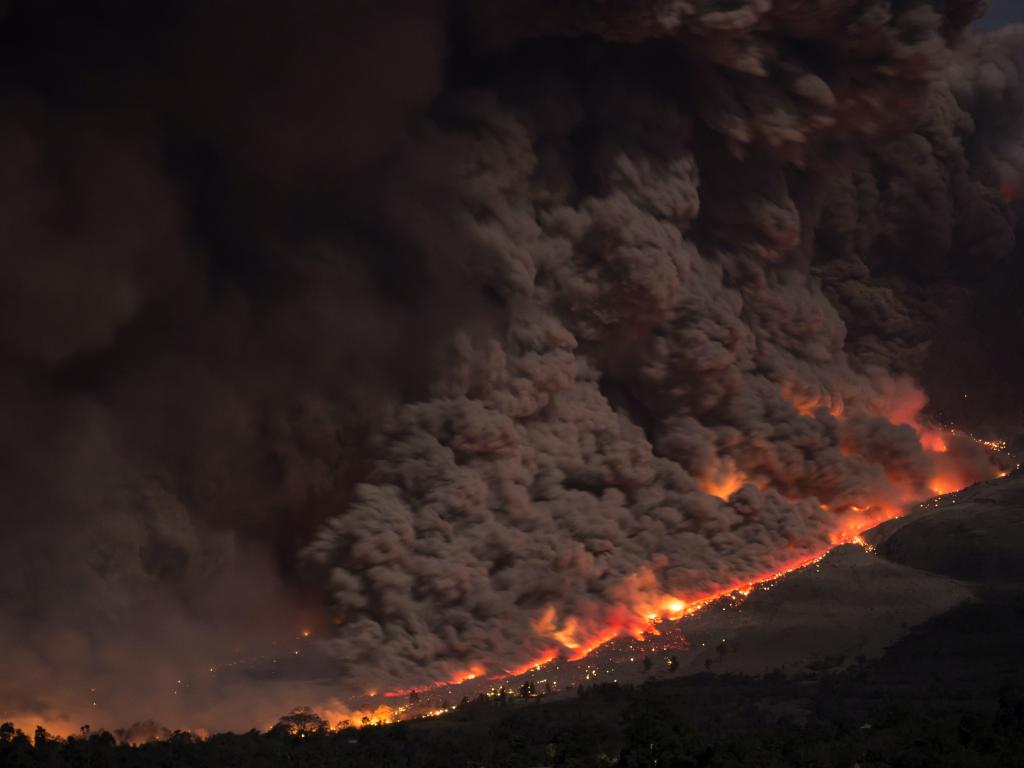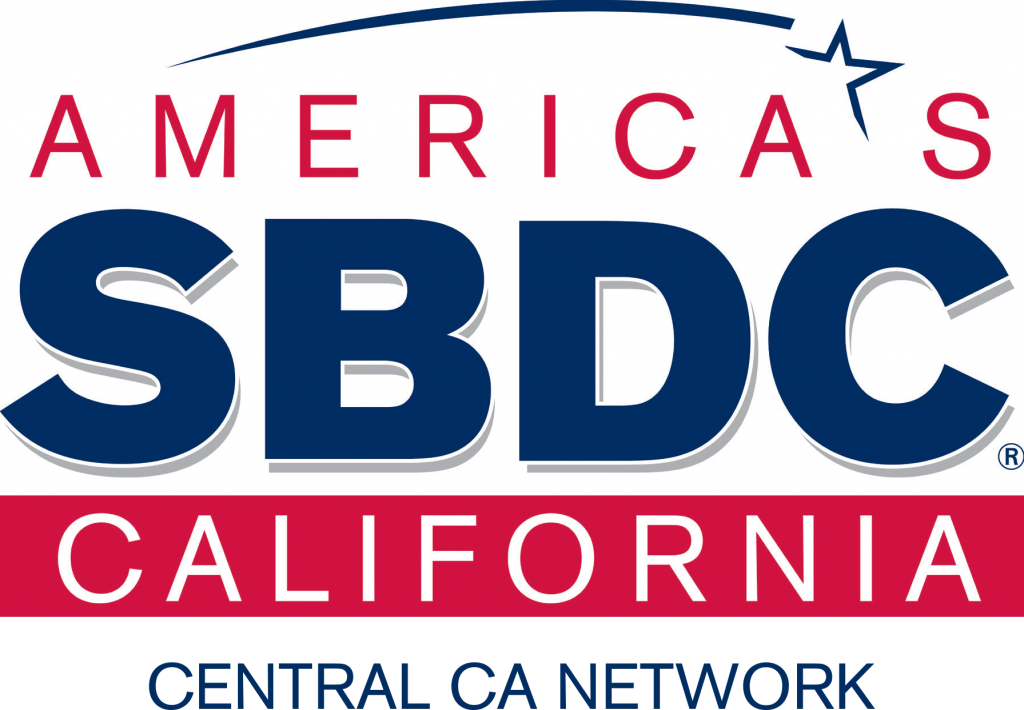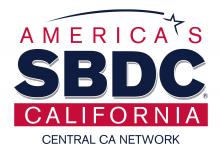SBA Disaster Loans - Wildfires

Date: 08/24/2020
U.S. SMALL BUSINESS ADMINISTRATION FACT SHEET - DISASTER LOANS
CALIFORNIA Declaration #16603 #16604
(Disaster: CA-00325)
Incident: WILDFIRES
occurring: August 14, 2020 & continuing in the California counties of: Lake, Monterey, Napa, San Mateo, Santa Cruz, Solano, Sonoma & Yolo; and for economic injury only in the contiguous California counties of: Alameda, Colusa, Contra Costa, Fresno, Glenn, Kings, Marin, Mendocino, Sacramento, San Benito, San Francisco, San Luis Obispo, Santa Clara & Sutter
Application Filing Deadlines:
Physical Damage: October 21, 2020
Economic Injury: May 24, 2021
If you are located in a declared disaster area, you may be eligible for financial assistance from the U.S. Small Business Administration (SBA).
What Types of Disaster Loans are Available?
- Business Physical Disaster Loans – Loans to businesses to repair or replace disaster-damaged property owned by the business, including real estate, inventories, supplies, machinery and equipment. Businesses of any size are eligible. Private, non-profit organizations such as charities, churches, private universities, etc., are also eligible.
- Economic Injury Disaster Loans (EIDL) – Working capital loans to help small businesses, small agricultural cooperatives, small businesses engaged in aquaculture, and most private, non-profit organizations of all sizes meet their ordinary and necessary financial obligations that cannot be met as a direct result of the disaster. These loans are intended to assist through the disaster recovery period.
- Home Disaster Loans – Loans to homeowners or renters to repair or replace disaster-damaged real estate and personal property, including automobiles.
What are the Credit Requirements?
- Credit History – Applicants must have a credit history acceptable to SBA.
- Repayment – Applicants must show the ability to repay all loans.
- Collateral – Collateral is required for physical loss loans over $25,000 and all EIDL loans over $25,000. SBA takes real estate as collateral when it is available. SBA will not decline a loan for lack of collateral, but requires you to pledge what is available.
What are the Interest Rates?
By law, the interest rates depend on whether each applicant has Credit Available Elsewhere. An applicant does not have Credit Available Elsewhere when SBA determines the applicant does not have sufficient funds or other resources, or the ability to borrow from non-government sources, to provide for its own disaster recovery. An applicant, which SBA determines to have the ability to provide for his or her own recovery is deemed to have Credit Available Elsewhere. Interest rates are fixed for the term of the loan. The interest rates applicable for this disaster are:
| Loan Types | No Credit Available Elsewhere | Credit Available Elsewhere |
|---|---|---|
Home Loans | 1.188% | 2.375% |
Business Loans | 3.000% | 6.000% |
Non-Profit Organizations | 2.750% | 2.750% |
Economic Injury Loans
| Loan Types | No Credit Available Elsewhere | Credit Available Elsewhere |
|---|---|---|
Business & Small Agricultural Cooperatives | 3.000% | N/A |
Non-Profit Organizations | 2.750 | N/A |
What are Loan Terms?
The law authorizes loan terms up to a maximum of 30 years. However, the law restricts businesses with credit available elsewhere to a maximum 7-year term. SBA sets the installment payment amount and corresponding maturity based upon each borrower’s ability to repay.
What are the Loan Amount Limits?
- Business Loans – The law limits business loans to $2,000,000 for the repair or replacement of real estate, inventories, machinery, equipment and all other physical losses. Subject to this maximum, loan amounts cannot exceed the verified uninsured disaster loss.
- Economic Injury Disaster Loans (EIDL) – The law limits EIDLs to $2,000,000 for alleviating economic injury caused by the disaster. The actual amount of each loan is limited to the economic injury determined by SBA, less business interruption insurance and other recoveries up to the administrative lending limit. EIDL assistance is available only to entities and their owners who cannot provide for their own recovery from non-government sources, as determined by the U.S. Small Business Administration.
- Business Loan Ceiling – The $2,000,000 statutory limit for business loans applies to the combination of physical, economic injury, mitigation and refinancing, and applies to all disaster loans to a business and its affiliates for each disaster. If a business is a major source of employment, SBA has the authority to waive the $2,000,000 statutory limit.
- Home Loans – SBA regulations limit home loans to $200,000 for the repair or replacement of real estate and $40,000 to repair or replace personal property. Subject to these maximums, loan amounts cannot exceed the verified uninsured disaster loss.
What Restrictions are there on Loan Eligibility?
- Uninsured Losses – Only uninsured or otherwise uncompensated disaster losses are eligible. Any insurance proceeds which are required to be applied against outstanding mortgages are not available to fund disaster repairs and do not reduce loan eligibility. However, any insurance proceeds voluntarily applied to any outstanding mortgages do reduce loan eligibility.
- Ineligible Property – Secondary homes, personal pleasure boats, airplanes, recreational vehicles and similar property are not eligible, unless used for business purposes. Property such as antiques and collections are eligible only to the extent of their functional value. Amounts for landscaping, swimming pools, etc., are limited.
- Noncompliance – Applicants who have not complied with the terms of previous SBA loans may not be eligible. This includes borrowers who did not maintain flood and/or hazard insurance on previous SBA loans.
Note: Loan applicants should check with agencies / organizations administering any grant or other assistance program under this declaration to determine how an approval of SBA disaster loan might affect their eligibility.
Is There Help with Funding Mitigation Improvements?
If your loan application is approved, you may be eligible for additional funds to cover the cost of improvements that will protect your property against future damage. Examples of improvements include retaining walls, seawalls, sump pumps, etc. Mitigation loan money would be in addition to the amount of the approved loan, but may not exceed 20 percent of total amount of physical damage to real property, including leasehold improvements, and personal property as verified by SBA to a maximum of $200,000 for home loans. It is not necessary for the description of improvements and cost estimates to be submitted with the application. SBA approval of the mitigating measures will be required before any loan increase.
Is There Help Available for Refinancing?
- SBA can refinance all or part of prior mortgages that are evidenced by a recorded lien, when the applicant (1) does not have credit available elsewhere, (2) has suffered substantial uncompensated disaster damage (40 percent or more of the value of the property or 50% or more of the value of the structure), and (3) intends to repair the damage.
- Businesses – Business owners may be eligible for the refinancing of existing mortgages or liens on real estate, machinery and equipment, up to the amount of the loan for the repair or replacement of real estate, machinery, and equipment.
- Homes – Homeowners may be eligible for the refinancing of existing liens or mortgages on homes, up to the amount of the loan for real estate repair or replacement.
What if I Decide to Relocate?
You may use your SBA disaster loan to relocate. The amount of the relocation loan depends on whether you relocate voluntarily or involuntarily. If you are interested in relocation, an SBA representative can provide you with more details on your specific situation.
Are There Insurance Requirements for Loans?
To protect each borrower and the Agency, SBA may require you to obtain and maintain appropriate insurance. By law, borrowers whose damaged or collateral property is located in a special flood hazard area must purchase and maintain flood insurance. SBA requires that flood insurance coverage be the lesser of 1) the total of the disaster loan, 2) the insurable value of the property, or 3) the maximum insurance available.
Applicants may apply online, receive additional disaster assistance information and download applications at https://disasterloanassistance.sba.gov/. Applicants may also call SBA’s Customer Service Center at (800) 659-2955 or email disastercustomerservice@sba.gov for more information on SBA disaster assistance. Individuals who are deaf or hard-of-hearing may call (800) 877-8339. Completed applications should be mailed to U.S. Small Business Administration, Processing and Disbursement Center, 14925 Kingsport Road, Fort Worth, TX 76155.




